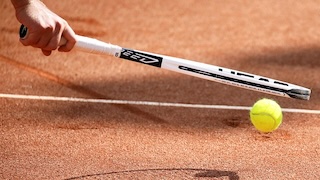Jul 24 (News On Japan) - Japan’s impact on Major League Baseball is no longer a budding phenomenon—it is a thriving pipeline of world-class talent that continues to evolve and impress.

From the passionate battlegrounds of Koshien Stadium to the bright lights of American ballparks, Japanese players have shaped and redefined the game. Each athlete brought not only unique skills but a cultural legacy of precision, endurance, and dedication. This article details the timeline of iconic Japanese players, with a special focus on stats, names, records, and contracts—every data point contributing to the story of Japan’s rising prominence in the MLB.
Shohei Ohtani: The Two-Way Revolution
Shohei Ohtani is the ultimate embodiment of modern baseball versatility. Born in Ōshū, Iwate, and groomed in Japan’s competitive high school circuit before making waves in Nippon Professional Baseball (NPB) with the Hokkaido Nippon-Ham Fighters, Ohtani exploded onto the MLB scene with the Los Angeles Angels. His rare ability to dominate both as a pitcher and a hitter earned him the 2021 American League MVP title with 46 home runs, 100 RBIs, 26 stolen bases, and a 3.18 ERA over 130.1 innings pitched. In 2023, he elevated the bar again, smashing 44 home runs, posting a .304 batting average, and tallying a 10-5 pitching record with a 3.14 ERA. The Los Angeles Dodgers secured Ohtani with a historic 10-year, $700 million contract in 2023—an MLB record—making him not only an athletic marvel, but a financial juggernaut as well.
Ichiro Suzuki: The Hit Machine
Ichiro Suzuki stands as the gold standard for Japanese position players in MLB. After amassing 1,278 hits in NPB, Ichiro transitioned to the Seattle Mariners in 2001 and immediately won AL Rookie of the Year and MVP. His rookie season included a .350 batting average and 242 hits. Over his MLB career, Ichiro collected 3,089 hits, maintaining a .311 batting average. He recorded ten consecutive 200-hit seasons, a streak that remains unmatched. Ichiro was a 10-time All-Star, 10-time Gold Glove winner, and the 2004 single-season hits record-holder with 262. His speed, bat control, and defensive mastery redefined leadoff roles in the MLB.
Hideo Nomo: The Windup That Shook the Majors
Hideo Nomo broke the barrier for modern Japanese players in MLB when he joined the Los Angeles Dodgers in 1995. His distinctive “tornado” windup and devastating forkball baffled hitters, earning him the NL Rookie of the Year. That season, he struck out 236 batters in 191.1 innings, leading the league in strikeouts per nine innings. Nomo threw two no-hitters during his MLB tenure and retired with 1,918 strikeouts and a 123-109 record over 12 seasons. His immediate success paved the way for other Japanese players and inspired a generation of MLB scouts to look toward Japan for future aces.
Yu Darvish: The Consistent Contender
Yu Darvish made headlines when he signed a six-year, $60 million contract with the Texas Rangers in 2012, with the posting fee bringing the total investment to over $110 million. A master of pitch variety, Darvish led the MLB in strikeouts in 2013 with 277 over 209.2 innings and holds a career tally of 1,978 strikeouts as of 2024. In 2018, the Chicago Cubs signed him to a six-year, $126 million deal. With a career ERA of 3.59 and five All-Star selections, Darvish remains one of the most respected and analytically impressive pitchers in the league.
MLB Prospects and Japan’s Future Pipeline
The excitement surrounding Japanese players does not stop at those who have already made it to the MLB. Scouts and analysts now keep a close eye on Japan’s high school tournaments—especially Koshien—and the NPB to identify emerging talent. MLB prospects like Roki Sasaki, who clocked 102.5 mph fastballs at just 20 years old, and Munetaka Murakami, who hit 56 home runs in the 2022 NPB season, are prime examples of the explosive potential Japan still holds. With teams increasing international scouting budgets, the race to sign the next global superstar is more competitive than ever.
Koshien Stadium: The Crucible of Champions
Koshien Stadium in Nishinomiya is the spiritual home of Japanese baseball. Hosting the annual National High School Baseball Championship, Koshien has been the launching pad for stars like Ohtani, Matsuzaka, and Darvish. This arena of pressure-packed games, broadcast nationwide, teaches young players mental toughness and discipline unmatched in any other amateur baseball setting. For many, success at Koshien becomes the passport to the NPB and eventually the MLB. It is more than a tournament—it is a rite of passage for Japan’s baseball elite.
The Posting System: Gateway to the Majors
The MLB-NPB posting system plays a crucial role in player transitions. Teams in Japan "post" players, giving MLB franchises 30 days to negotiate a contract. The player’s Japanese team receives a percentage of the contract’s value—20% for deals over $25 million. Ohtani’s posting fee in 2017, under old rules, was capped at $20 million. The system ensures fair compensation and encourages investment in player development. Although not without criticism, it remains a vital mechanism linking Japan’s top talents to American ballclubs.
Financial Stakes and Global Broadcasting
The influx of Japanese stars into MLB has had financial ripple effects beyond the ballpark. Ohtani’s $700 million contract includes deferred payments and allows the Dodgers financial flexibility, while his global endorsement deals with Seiko, Asics, and Boss push his annual earnings well above $100 million. Ichiro’s presence in Seattle led to broadcast deals in Japan and a surge in international merchandise sales. Nomo’s debut in 1995 even resulted in games being aired during Japanese primetime. These financial stakes highlight the global integration of talent and fandom.
Cultural Discipline and Adaptation
Japanese players bring a culture of discipline and respect that often impresses teammates and managers in the MLB. Known for their grueling training regimens, attention to detail, and commitment to fundamentals, Japanese stars often outperform expectations. For instance, Ohtani follows a strict daily schedule involving weightlifting, stretching, language study, and media commitments. Ichiro famously adhered to a warm-up ritual and dietary routine that remained unchanged for years. This cultural foundation not only builds durability but also facilitates smoother adaptation to the pressures of American baseball.
Impact Beyond the Diamond
For Japan, every player who succeeds in the MLB represents not just athletic excellence but national pride. Ichiro’s success in Seattle inspired a generation of Japanese kids to pick up a bat. Nomo’s debut was covered like a state affair back home. Ohtani has transcended sports, becoming a global ambassador for Japan. These athletes are often seen as role models who carry cultural identity and international prestige. Their stories transcend the scoreboard, impacting education, media, and even diplomacy.
The Legacy and the Road Ahead
Japan’s influence on MLB has transformed from occasional novelty to strategic necessity. Players like Nomo opened doors, Ichiro redefined hitting, Darvish advanced analytics in pitching, and Ohtani shattered every conventional mold. With more MLB prospects emerging from Japan's rigorous development system, it is clear the talent flow is only accelerating. From the packed stands at Koshien to multimillion-dollar deals in Los Angeles, the bridge between Japan and the majors is now a superhighway for elite baseball greatness.















